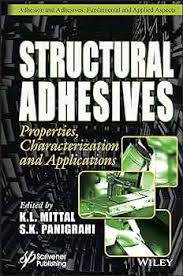Case Study: Enhancing Efficiency in Adhesives and Coatings Manufacturing
Bulk bag weigh batching helps an adhesives and coatings manufacturer increase productivity.






A fire gutted a 9,000-sq-ft building at the Canadian head office and manufacturing and distribution center of the Henry Co., a manufacturer of commercial and residential foundation coatings, roofing products, caulks, adhesives, driveway sealers, and other building products marketed under the Building Envelope Systems® trademark. In rebuilding the facility, the company re-engineered its processes, achieving a two-fold increase in production, along with improvements in safety, morale and environmental practices. One major improvement was the replacement of manual bag dumping with an automated bulk bag weigh batch discharging system from Flexicon Corp., a move that boosted productivity, quality and safety while cutting labor and material costs.
Bulk Bag Discharge System
Previously, workers manually carried 50-lb bags containing a polymer additive to a 6,000-gal mixing tank containing asphalt, cut open the bags and dumped them. A typical batch required 2,000-6,000 lb of polymer, or 40 to 120 bags.
“That’s a lot of manual slogging,” says Todd Thertell, plant manager.
Henry engineers evaluated equipment that would allow purchasing of the polymer powder in bulk bags, ultimately selecting a Flexicon Bulk-Out® bulk bag weigh batching system comprised of a model BFF bulk bag discharger with integral flexible screw conveyor and weigh batching controls.
“We now buy the polymer in 2,000-lb bulk bags, so depending on batch size, we’re handling just one bulk bag or two, with no risk of losing count of paper sacks,” Thertell says. “The process of carrying, opening and dumping bags, which previously required one hour, can now be accomplished in just 15-20 minutes. Plus, we now purchase our additive at lower cost in bulk bags than was possible when buying it in paper sacks.”
Complete Discharge of Bag Contents
With the new system, an operator attaches the bulk bag to a lifting frame and forklift-loads the frame and bag into receiving cradles atop the bulk bag discharger. With the bag secured over the 8-cu-ft capacity hopper, the operator pulls the bag spout through a Power-Cincher® flow control valve that cinches the bag spout to regulate flow, prevent product leakage, and permit dust-free retying of partially emptied bags.
Below the flow control valve is a manual Spout-Lock® clamp ring that is raised by a Tele-Tube® telescoping tube for a dust-tight connection to the bag spout. With the connection secure, the operator unties the bag spout and opens the flow control valve to initiate flow. The telescoping tube lowers, applying continual downward tension to keep the spout taut as the bag empties, promoting complete discharge into the hopper.
At the same time, Flow-Flexer® bag activators raise and lower the bottom edges of the bag, directing material into the outlet spout and raising the bag into a steep “V” shape to promote total discharge. In addition, Pop-Top™ extension arms at the top of the four discharger posts stretch the bag into a cone shape as it empties and elongates, aiding in complete discharge.
Automated Loss-of-Weight Batching
Hot-melt products are made to order, so
batch sizes vary. The operator enters the required batch weight into the PLC controller.
“It works on a net loss system,” Thertell explains. The discharger frame sits on four load cells, so when you load the bulk bag, the weight of the bag is displayed on the screen.
When the operator initiates a cycle, the 4.5-in.-diameter, 35-ft-long conveyor transports the powder to a height of 19 ft. The material exits the conveyor below the point at which the rotating screw connects to the gear reducer, preventing material contact with seals, and flows through a transition adapter, slide gate valve and downspouting before entering the mixing tank.
The PLC receives loss-of-weight information from the load cells, running the conveyor at full discharge rate until the target weight is approached, and then reduces the feed rate to dribble, stopping the conveyor and closing the Power-Cincher valve when the accurate batch weight has been lost.
“If we’re unloading a 2,000-lb bulk bag and the recipe calls for 1,800 lb, we just program in ‘1,800’ and push ‘start,’” Thertell says.
The 8-cu-ft capacity floor hopper is equipped with a large door, bag tray support and safety screen for oversize/foreign material, allowing operators to manually add pre-weighed minor ingredients to the batch.
Temperature-sensitive polymers were a concern in designing the conveyor, according to Thertell. If any particles lodged between the stainless steel screw and plastic conveyor tube, they would heat, melt, and gum up the works. Flexicon therefore tested a sample of the polymer, and selected a spiral design that minimizes compression of material between the spiral and tube wall. The conveyor screw also self-centers as it rotates, providing clearance between the screw and tube wall to prevent grinding or frictional heat.
As the bulk bag contents flow into the hopper, displaced air and dust are drawn into a Bag-Vac dust collector attached to the discharger frame. Reverse-pulse air jets dislodge material collected on the filter for the particles to return to the material stream. Because the connection of the bag to the hopper is sealed, activating the dust collector causes the empty bag to collapse under vacuum, extracting air and residual dust. “When the process runs, there’s essentially no dust,” says Thertell.
Short Batching Cycles
Processing speed was another consideration. Once the polymer has been transferred to the mixing tank, the polymer and asphalt undergo “pre-mix” blending at 148.9°F for two hours. Then the mixture is pumped to one of three 3,000-gal “let-down” tanks that are used to finish the product. Additional polymer fillers are manually added, and the let-down batch undergoes another two hours of processing. Thertell explains that once the material has been added to the mixing tank, the process is time sensitive.
“We have 18 hours to convert it to a finished product and package it for shipment before its properties change,” he says. “Instead of a nice rubbery balanced mixture, it becomes thick and stringy and difficult to melt. If we make a large batch—say 6,000 lb of rubber—in the old process, the operators became tired and stopped to take a break. The pre-mix took longer, risking a bad batch. Now it goes faster and easier. Typical batch processing time for pre-mix formulations has been halved, from four hours to just two.”
Improvements Increase Productivity
“Our operators love the system because they’re not handling and cutting all the bags,” Thertell says. “There are no repetitive motion-type injuries with people twisting or straining to lift or cut the bags—you’re saving all that wear and tear on the body. The system also freed up personnel to handle other productive activities. There is no reduction in our workforce, so they’re happy about that, too.
“We also don’t have the waste that we had previously. Just one sack that’s returnable. Now we have a poly sack that we flatten down and return to our supplier to be refilled with polymer. It’s more environmentally friendly, because we’re not generating any waste for landfills.”
For more information, call (610) 814-2400, email sales@flexicon.com or visit www.flexicon.com.
Looking for a reprint of this article?
From high-res PDFs to custom plaques, order your copy today!














